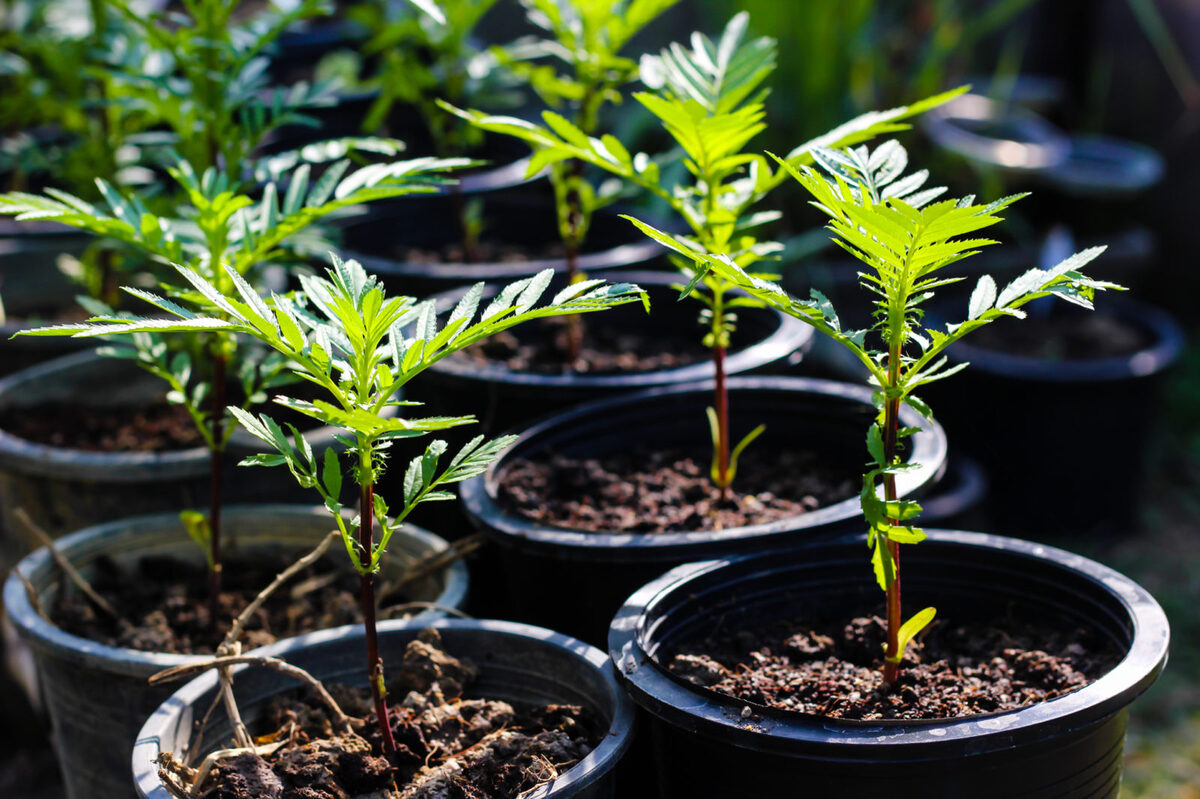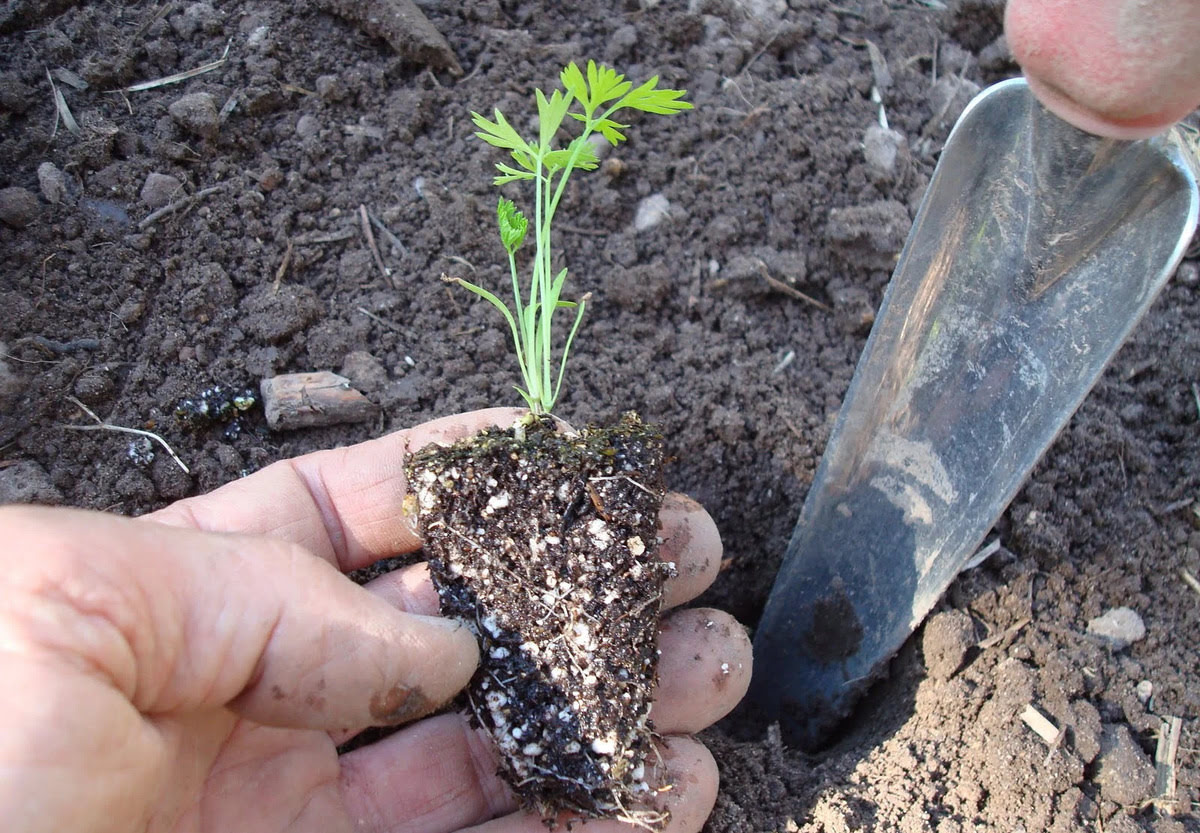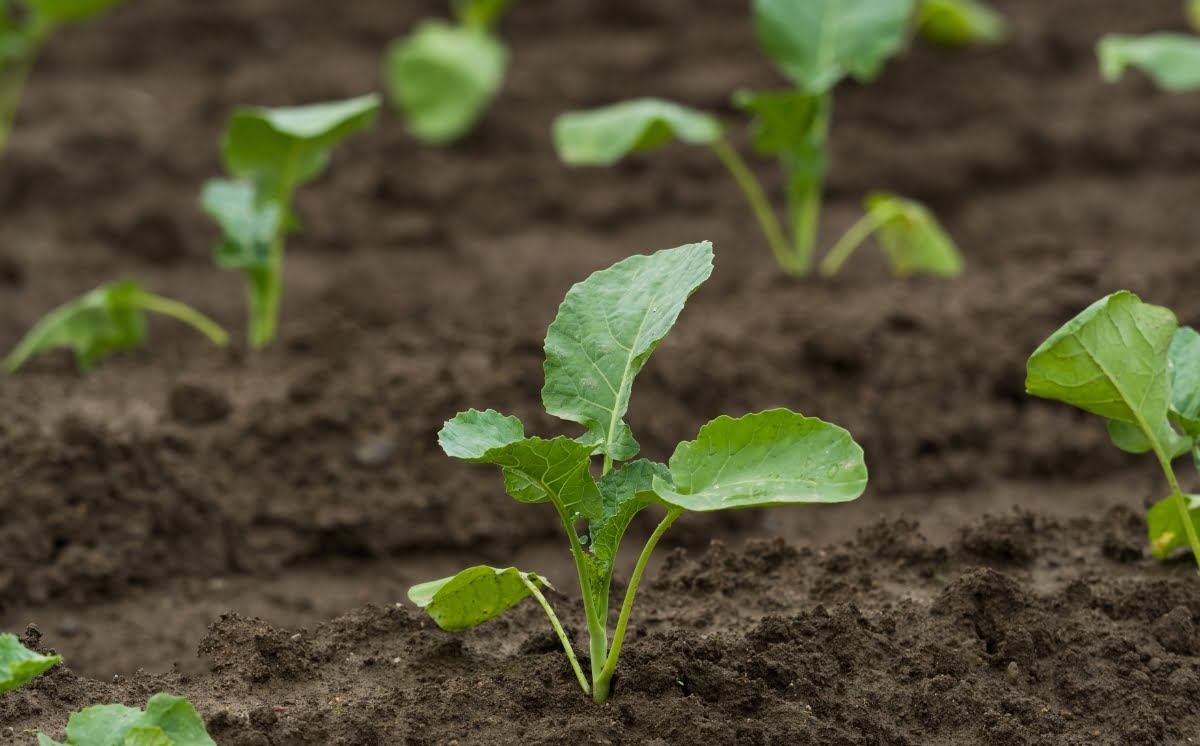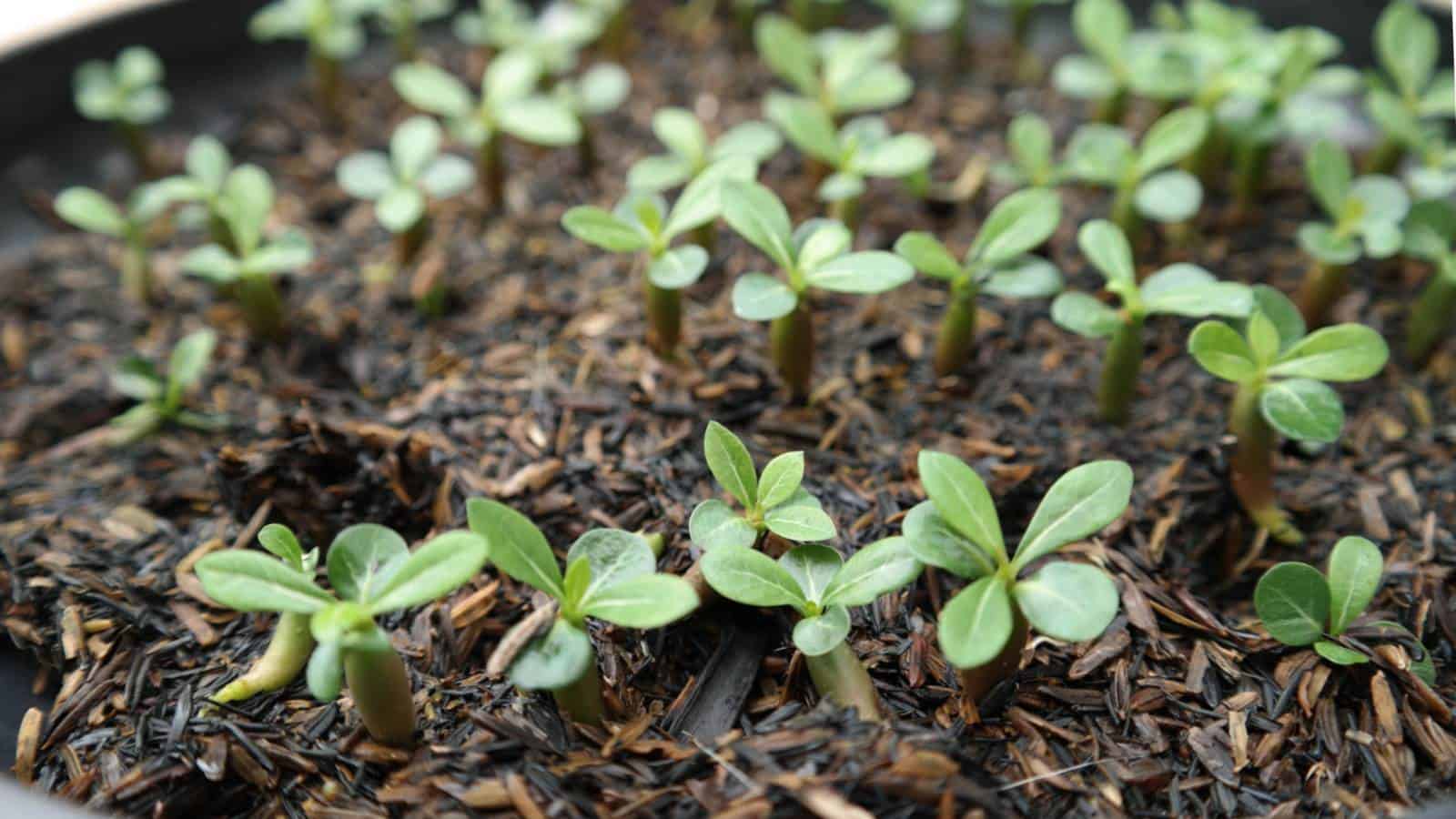Home>Types of Gardening>Ornamental Gardening>When To Transplant Marigold Seedlings


Ornamental Gardening
When To Transplant Marigold Seedlings
Modified: January 22, 2024
Discover the best time for transplanting marigold seedlings in your ornamental garden. Learn expert tips and techniques for successful plant relocation.
(Many of the links in this article redirect to a specific reviewed product. Your purchase of these products through affiliate links helps to generate commission for Chicagolandgardening.com, at no extra cost. Learn more)
Table of Contents
- Introduction
- What are Marigold Seedlings?
- Why Transplant Marigold Seedlings?
- When is the Right Time to Transplant Marigold Seedlings?
- Signs That Marigold Seedlings are Ready for Transplanting
- Proper Method for Transplanting Marigold Seedlings
- Care Tips After Transplanting Marigold Seedlings
- Common Mistakes to Avoid when Transplanting Marigold Seedlings
- Conclusion
Introduction
Welcome to the fascinating world of ornamental gardening! If you have a green thumb and a passion for beautifying your outdoor space, then you’re in the right place. One aspect of ornamental gardening that can bring immense joy and visual appeal to your garden is growing marigold seedlings. However, the process of transplanting these delicate young plants requires careful consideration and timing.
Marigolds are vibrant and versatile flowers that add a burst of color and charm to any garden or landscape. With their cheerful blooms and strong aroma, they are a popular choice for both novice and experienced gardeners. While marigold seeds can be sown directly into the ground, starting them as seedlings indoors allows for more control over their growth and can provide faster blooms.
Transplanting marigold seedlings is an important step in the gardening process, as it allows the young plants to establish themselves in a new location and continue to thrive. However, it’s crucial to transplant marigold seedlings at the right time to ensure their success.
In this article, we will explore the factors to consider when transplanting marigold seedlings, including the ideal timing, signs of seedling readiness, proper transplanting techniques, and post-transplant care tips. By following these guidelines, you’ll be well-equipped to ensure the health and longevity of your marigold plants, giving them the best chance to flourish and brighten up your garden.
What are Marigold Seedlings?
Marigold seedlings are young plants that have sprouted from marigold seeds and are in the early stages of development. These seedlings are delicate and require careful attention and care to ensure their proper growth and establishment.
Marigolds are a popular choice among gardeners for their striking flowers, which come in various shades of yellow, orange, and red. They are known for their distinct scent and their ability to repel pests, making them a valuable addition to any garden.
Marigold seeds are relatively easy to germinate, and once they sprout, they form seedlings. These seedlings have small, tender leaves and fragile roots. It is essential to handle them with care to prevent any damage during the transplanting process.
Marigold seedlings typically reach a height of 2-3 inches before they are ready to be transplanted into the garden or larger containers. At this stage, they have developed a strong root system that allows for successful transplantation and continued growth.
It’s important to note that there are different varieties of marigolds, including French marigolds (Tagetes patula) and African marigolds (Tagetes erecta). The size and growth habits of these varieties may vary, but their seedlings generally share similar characteristics.
Marigold seedlings have the potential to thrive both indoors and outdoors, depending on your gardening preferences and environmental conditions. Starting marigold seeds indoors allows for better control over their early growth stages, as it provides a controlled environment with optimal temperature and moisture levels.
By understanding the nature of marigold seedlings and their specific needs, you can ensure their healthy development and successful transplantation into your garden or containers. Let’s explore when the right time to transplant marigold seedlings is and the signs that indicate they are ready for this crucial step.
Why Transplant Marigold Seedlings?
Transplanting marigold seedlings is an essential step in the gardening process that offers several benefits for the overall health and well-being of the plants. Let’s explore why it is crucial to transplant marigold seedlings:
- Optimal Growing Conditions: Marigold seedlings started indoors may outgrow their original containers or trays, requiring more space for their roots to spread and establish. Transplanting them into larger pots, garden beds, or containers provides them with enough room to grow and access essential nutrients and water.
- Enhanced Vigor and Development: By transplanting marigold seedlings, you give them the opportunity to develop a robust root system, which is critical for their overall health and vigor. In a larger planting space, the roots can spread out and search for nutrients and water more efficiently, resulting in stronger and healthier plants.
- Proper Spacing: Transplanting marigold seedlings allows you to space them appropriately, ensuring that each plant has enough room to grow and thrive. Crowded plants can compete for resources and may become more susceptible to diseases and pest infestations. Adequate spacing also promotes better airflow and reduces the risk of fungal diseases.
- Timing Control: Transplanting marigold seedlings gives you control over the timing of their growth and blooming. By starting the seeds indoors and transplanting at the right time, you can extend the flowering period and enjoy a more prolonged display of colorful blooms in your garden.
Additionally, transplanting marigold seedlings provides an opportunity to rearrange your garden design and create visually pleasing arrangements. You can strategically place the marigold plants to complement other flowers or serve as a border or focal point in your garden beds.
Keep in mind that while transplanting is beneficial for the overall growth and health of marigold seedlings, it’s important to handle them gently and minimize root disturbance during the process. Now that we understand why transplanting marigold seedlings is crucial, let’s explore when the right time is to undertake this task.
When is the Right Time to Transplant Marigold Seedlings?
Transplanting marigold seedlings at the right time is crucial for their successful establishment and growth in their new location. While every gardening zone and microclimate can vary, there are some general guidelines to determine when it’s appropriate to transplant marigold seedlings:
- After the Last Frost: Marigolds are warm-season flowers that thrive in temperatures above freezing. It’s important to wait until the threat of frost has passed before transplanting marigold seedlings outdoors. Typically, this is after the last expected frost date in your region.
- When Seedlings Have 2-4 True Leaves: True leaves are the second set of leaves that appear after the initial sprouting of the seedlings. When marigold seedlings have 2-4 true leaves, it is an indication that they have developed a strong root system and are ready to be transplanted.
- When Soil Temperature is Suitable: Marigolds prefer warm soil for optimal growth. Before transplanting, ensure that the soil temperature is around 60°F (15°C) or higher to encourage root growth and minimize transplant shock.
- When Seedlings Display Sturdy Stems: Transplanting marigold seedlings becomes easier when they have sturdy stems that can handle the stress of transplantation. Delicate and leggy seedlings may not fare well during the transplanting process and may require additional care and support.
- When Seedlings Are Not Overcrowded: If you started marigold seeds in a communal container or tray, it’s crucial to transplant them before they become overcrowded or root-bound. Giving each seedling enough space to grow will promote healthy development and minimize competition for resources.
Remember, these are general guidelines, so it’s essential to consider your specific climate, soil conditions, and the growth stage of your marigold seedlings when determining the right time to transplant them. Observing the seedlings closely and assessing their readiness based on the mentioned indicators will help ensure a successful transplanting process.
Now that we know when to transplant marigold seedlings, let’s explore the signs that indicate that the seedlings are ready for this critical step.
Signs That Marigold Seedlings are Ready for Transplanting
Transplanting marigold seedlings at the right time is crucial for their successful establishment and growth in a new location. To ensure that the seedlings are ready, there are several signs to look for:
- Strong Root System: Check if the marigold seedlings have developed a healthy and extensive root system. Gently lift a few seedlings from their container or tray, and if you see a network of white, well-established roots, it’s a good indication that they are ready for transplanting.
- Sturdy Stems and Healthy Foliage: Look for seedlings with sturdy stems and deep green foliage. Strong stems are better equipped to handle the stress of transplantation, and healthy leaves indicate that the seedlings are receiving sufficient nutrients and light for optimal growth.
- Multiple True Leaves: True leaves are the second set of leaves that appear after the initial cotyledons (seed leaves). Transplanting marigold seedlings when they have grown 2-4 pairs of true leaves ensures that they have reached an appropriate stage of development for successful transplantation.
- No Overcrowding or Root-Bound Roots: If the seedlings are growing in a communal container or tray, check if they are overcrowded or if their roots have become root-bound, where they start to wrap around each other. Transplanting before overcrowding or root-bound roots occur will prevent stunted growth and ensure healthy plants.
- Active Growth: Healthy marigold seedlings exhibit active growth, with new leaves and stems continuously sprouting. Seedlings showing vigorous growth are more likely to adapt well to transplanting and establish themselves quickly in their new environment.
It’s important to note that the timing for transplanting marigold seedlings may vary based on factors such as your specific climate, soil conditions, and the growth rate of the seedlings. The signs mentioned above serve as general indicators of seedling readiness, but it’s always best to observe them closely and use your judgment.
Once you’ve determined that the marigold seedlings are ready for transplanting, it’s essential to follow the proper method to ensure minimal stress on the plants and maximize their chances of thriving in their new location. Let’s explore the recommended steps for transplanting marigold seedlings.
Proper Method for Transplanting Marigold Seedlings
Transplanting marigold seedlings is a delicate process that requires care and attention to ensure the plants’ successful transition. Follow these steps to transplant marigold seedlings properly:
- Prepare the Planting Area: Choose a location in your garden that receives full sun or partial shade. Prepare the soil by removing any weeds and loosening it with a garden fork or tiller. Incorporate organic matter, such as compost or well-rotted manure, to improve soil fertility and drainage.
- Water the Seedlings: Before transplanting, give the seedlings a thorough watering to hydrate the roots and help them withstand the transplant shock.
- Dig the Planting Hole: Dig a hole in the prepared soil that is slightly larger than the root ball of the seedling. The hole should be deep enough so that the seedling can be planted at the same depth as it was in its original container.
- Remove the Seedling: Gently remove a marigold seedling from its container by grasping the base of the plant near the soil line. Be careful not to pull on the stem or damage the delicate roots.
- Place the Seedling in the Hole: Lower the seedling into the planting hole, positioning it at the same level it was growing before. Ensure that the roots are spread out and not cramped or bent.
- Backfill and Firm the Soil: Fill the hole gently with soil, ensuring that it is evenly distributed around the roots. Firm the soil lightly around the base of the seedling to provide stability and eliminate any air pockets.
- Water Thoroughly: After transplanting, give the seedlings a deep watering to settle the soil and help them establish. Water at the base of the plants rather than overhead to prevent damage to the leaves and flowers.
- Mulch the Area: Apply a layer of organic mulch around the base of the transplanted seedlings to help conserve moisture, suppress weeds, and regulate soil temperature.
It’s essential to handle marigold seedlings with care during the transplanting process, minimizing any damage to the roots or foliage. If the seedlings appear wilted or stressed after transplanting, provide them with some shade or protection until they recover.
Remember, each marigold seedling should be spaced at least 8-12 inches apart to allow ample room for growth. Follow these proper transplanting methods to ensure the health and longevity of your marigold plants.
Now that the marigold seedlings are in their new location, let’s explore some important care tips to help them thrive after transplantation.
Care Tips After Transplanting Marigold Seedlings
After transplanting marigold seedlings into their new home, it’s important to provide them with proper care to ensure their continued growth and health. Follow these care tips to help your transplanted marigold seedlings thrive:
- Watering: Water the newly transplanted seedlings regularly, keeping the soil consistently moist but not waterlogged. Water deeply to encourage the roots to grow deeper into the soil. Avoid overhead watering, as wet leaves can lead to disease issues.
- Mulching: Apply a layer of organic mulch around the base of the marigold seedlings to help retain moisture in the soil, suppress weeds, and regulate soil temperature. Keep the mulch a few inches away from the stem to prevent rotting.
- Fertilizing: Marigolds are generally not heavy feeders. You can apply a balanced slow-release fertilizer or organic compost around the plants to provide them with a boost of nutrients. Follow the manufacturer’s instructions for proper application rates.
- Protect from Pests: Marigolds are known for their ability to repel pests, but it’s important to monitor for any signs of insect infestations. Remove any visible pests by hand or use organic pest control methods if necessary.
- Deadheading: As the marigold plants begin to produce flowers, regularly deadhead, or remove faded blooms. This will encourage the plants to continue producing new flowers and maintain a neat appearance.
- Weeding: Be vigilant in removing weeds that may compete with the marigold seedlings for nutrients and water. Regularly inspect the garden bed and remove any unwanted plants or weeds that may hinder the growth of your marigolds.
- Monitor for Disease: Pay attention to any signs of disease, such as yellowing leaves or spots on the foliage. If you notice any issues, promptly identify and address the problem using appropriate organic disease control methods to prevent further spread.
- Support for Tall Varieties: If you have chosen tall varieties of marigolds, install stakes or support structures around the seedlings to provide stability and prevent them from bending or breaking during heavy rains or strong winds.
By following these care tips, you’ll create an optimal environment for your transplanted marigold seedlings to thrive and produce beautiful blooms. Regular observation and proactive care will help to ensure healthy and vibrant marigold plants in your garden.
Now that we’ve discussed how to care for transplanted marigold seedlings, let’s explore some common mistakes to avoid during the transplantation process.
Common Mistakes to Avoid when Transplanting Marigold Seedlings
Transplanting marigold seedlings can be a delicate process, and avoiding common mistakes can help ensure the success of your plants. Here are some common mistakes to avoid when transplanting marigold seedlings:
- Transplanting Too Early: One of the most common mistakes is transplanting marigold seedlings too early. Ensure that the risk of frost has passed, and the seedlings have reached an appropriate size and development stage before transplanting them into the garden or larger containers.
- Handling Seedlings Roughly: Seedlings, especially marigolds, have delicate roots and stems. Avoid rough handling that can damage or break the roots and foliage. Hold the seedlings by the base near the soil line to minimize damage during the transplanting process.
- Planting Too Deep or Shallow: Planting marigold seedlings too deep or too shallow can hinder their growth. Plant them at the same depth as they were previously growing, ensuring that the root ball is covered with soil but the stem is not buried. This will help prevent rot or damage to the stem.
- Overcrowding: Planting marigold seedlings too closely together can lead to overcrowding, restricting their growth and airflow. Follow the recommended spacing guidelines for the specific marigold variety you are planting to ensure adequate space for each seedling.
- Watering Excessively or Insufficiently: Proper watering is essential for the health of marigold seedlings. Avoid overwatering, which can lead to root rot, as well as underwatering, which can cause stress and hinder their growth. Maintain consistent moisture in the soil without allowing it to become overly saturated.
- Neglecting Hardening Off: Hardening off is the process of gradually acclimating seedlings to outdoor conditions before transplanting them. Avoid neglecting this crucial step, as it helps seedlings adjust to sunlight, temperature, and wind. Gradually expose them to outdoor conditions over a period of one to two weeks before transplanting.
- Failing to Protect from Extreme Weather: Extreme weather conditions, such as strong winds or heavy rainfall, can damage young marigold seedlings. Ensure that the plants are adequately protected from harsh weather by providing support structures or temporary covers during storms or high winds.
- Skipping Post-Transplant Care: After transplanting, it’s essential to care for the seedlings properly. Avoid neglecting watering, mulching, or removing weeds, as these practices contribute to the overall health and well-being of the marigold plants.
By avoiding these common mistakes, you can ensure a successful transplanting process and give your marigold seedlings the best chance to thrive in their new environment. Now that we’ve covered these common pitfalls, it’s time to wrap up our discussion on marigold seedling transplantation.
Conclusion
Transplanting marigold seedlings is an important and rewarding task in ornamental gardening. By following the proper methods and timing, you can ensure the successful establishment and growth of these vibrant and charming flowers in your garden.
Throughout this article, we’ve explored various aspects of transplanting marigold seedlings, including the significance of the process, the signs that indicate seedling readiness, the proper transplanting method, and essential care tips after transplantation. By understanding these key factors, you’ll be well-equipped to create an optimal environment for your marigold seedlings to flourish.
Remember to transplant marigold seedlings after the threat of frost has passed when they have developed a strong root system and sturdy stems. Take care to handle the seedlings gently, ensuring they are planted at the correct depth and spaced adequately. After transplantation, provide consistent watering, mulching, and fertilization, and monitor the plants for any signs of pests or diseases.
Avoid common mistakes such as transplanting too early, rough handling of seedlings, improper planting depth, overcrowding, over or under watering, neglecting hardening off, and failing to protect from extreme weather conditions. By avoiding these errors, you can maximize the chances of success for your marigold seedlings.
With their vibrant colors, pleasant fragrance, and pest-repelling properties, marigold flowers are a delightful addition to any ornamental garden. Whether you choose to grow them in garden beds, containers, or hanging baskets, taking the time to transplant marigold seedlings properly will provide you with a beautiful and rewarding display of blooms.
So, roll up your sleeves, grab your gardening tools, and get ready to experience the joy of transplanting marigold seedlings. With proper care and attention, these delightful flowers will flourish and bring a burst of color and charm to your outdoor space. Happy gardening!










